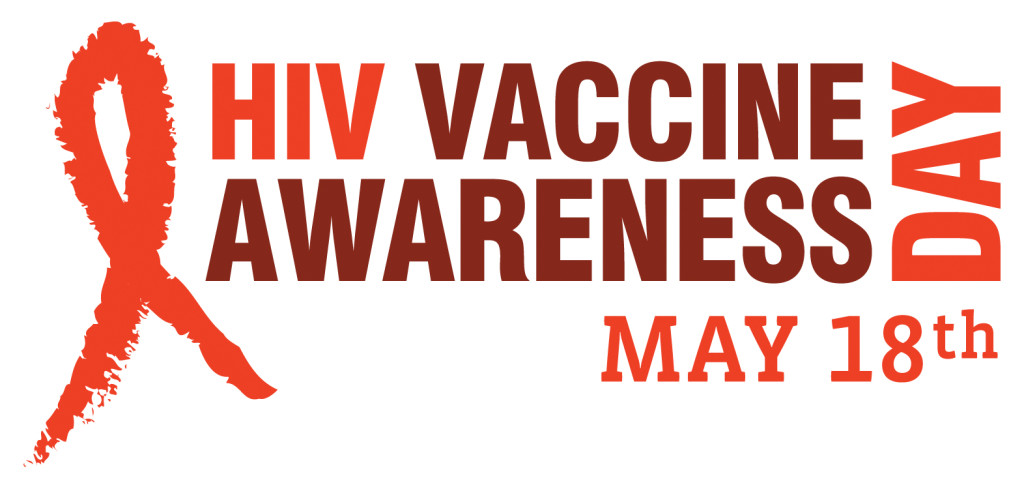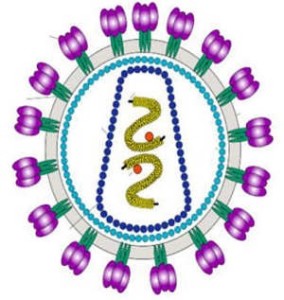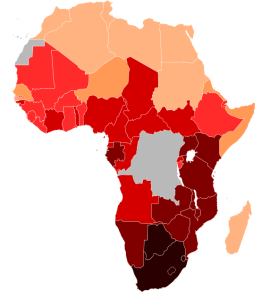 An effective HIV-1 vaccine is expected to have the greatest impact on HIV-1 spread and remains a global scientific priority. Only one candidate vaccine has significantly reduced HIV-1 acquisition, yet at a limited efficacy of 31%, and none have delayed disease progression in vaccinated individuals. Thus, the challenge remains to develop HIV-1 immunogens that will elicit protective immunity. An article published in Virology Journal summarizes the current strategies and progress in the design of HIV-1 immunogens to elicit effective T cell and B cell response, providing potential approaches to prevent HIV infection.
An effective HIV-1 vaccine is expected to have the greatest impact on HIV-1 spread and remains a global scientific priority. Only one candidate vaccine has significantly reduced HIV-1 acquisition, yet at a limited efficacy of 31%, and none have delayed disease progression in vaccinated individuals. Thus, the challenge remains to develop HIV-1 immunogens that will elicit protective immunity. An article published in Virology Journal summarizes the current strategies and progress in the design of HIV-1 immunogens to elicit effective T cell and B cell response, providing potential approaches to prevent HIV infection.
One of the greatest barriers to generating an HIV vaccine is the diversity present within the viral population, ever increasing as a result of mutation. The key to a highly effective and long lasting vaccine is targeting a static region of the pathogen, a region that can’t be mutated without compromising the viability of the virus. An article by Laith Q Al- Mawsawi and colleagues published in Retrovirology evaluates the mutational tolerability of HIV-1, for each of its 5553 individual nucleotides. This research can aid in the design of broadly effective HIV vaccine, and their method can be used to study other dynamic viral pathogens.
Mawsawi and colleagues published in Retrovirology evaluates the mutational tolerability of HIV-1, for each of its 5553 individual nucleotides. This research can aid in the design of broadly effective HIV vaccine, and their method can be used to study other dynamic viral pathogens.
HIV-1 entry into host cells is mediated by interactions between the virus envelope glycoprotein (gp120/gp41) and host-cell receptors. An article by Milan Raska and colleagues published in AIDS Research and Therapy indicates that the glycosylation machinery of different cells shapes gp120 glycosylation and, consequently, impacts envelope recognition by specific antibodies as well as the interaction of HIV-1 gp120 with cellular receptors. These findings underscore the importance of selection of appropriately glycosylated HIV-1 envelope as a vaccine antigen.
The one thing all successful vaccines have in common is the eliciting of neutralizing antibodies. A proposed mechanism for decreasing incidence of initial infection is the aggregation of HIV particles, mediated by neutralizing antibodies. In an article published in Retrovirology, Daniel Stieh and colleagues tested the potential for aggregate formation of IgG and IgA antibodies from infected patients. The authors were able to show that Env-specific antibodies had the capacity to cross-link HIV-1 virions into stable viral aggregates.

South Africa is a major hub of HIV prevention trials where the development of safe and effective vaccines has been identified as a priority. Ethical guidelines for prevention and care of patients in these trials is a complex issue that site staff, Community Advisory Board members and Research Ethics Committee members have to deal with. In an article published in BMC Medical Ethics, Rika Moorhouse and colleagues invited these stakeholders to participate in an empirical study, rating care-orientated and prevention-orientated recommendations. Although both types were rated highly, recommendations related to care were rated more positively than those related to prevention, leading the authors to suggest prevention recommendations be prioritized for refinement in the future. Differences in ratings suggest groups hold different views on whether particular recommendations are able to protect participants in these trials, or even whether these guidelines can be implemented in practice.
Although HIV Vaccine Awareness Day is only once a year, the work towards a safe and effective HIV vaccine is nonstop, and each researcher, doctor, patient and volunteer bring us closer to that goal. Thank you to all who have helped, we look forward to seeing you on the other side.
Dana Berry
Latest posts by Dana Berry (see all)
- Paul D. Bieniasz wins the KT Jeang Retrovirology prize 2015 - 7th October 2015
- Quiz: Test your knowledge of antimicrobial resistance - 7th October 2015
- HIV Vaccine Awareness Day 2015 - 19th May 2015
Comments